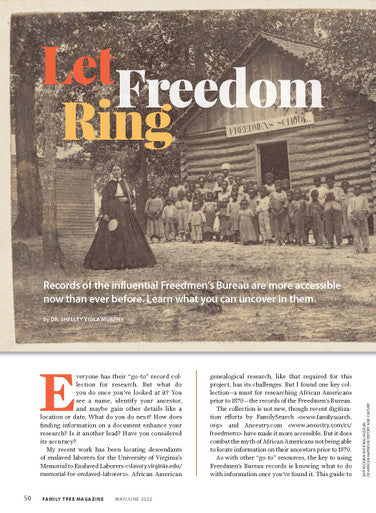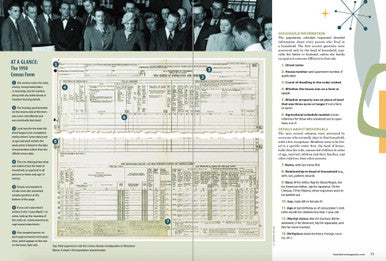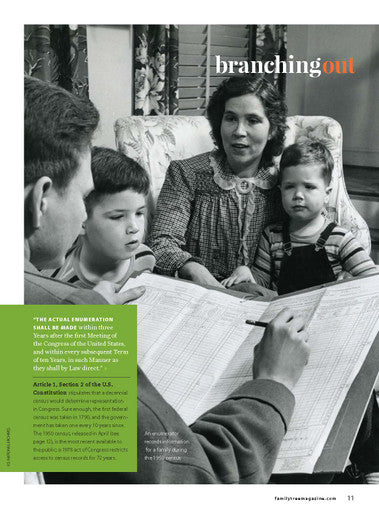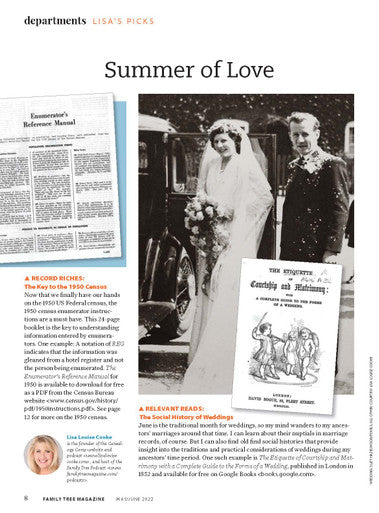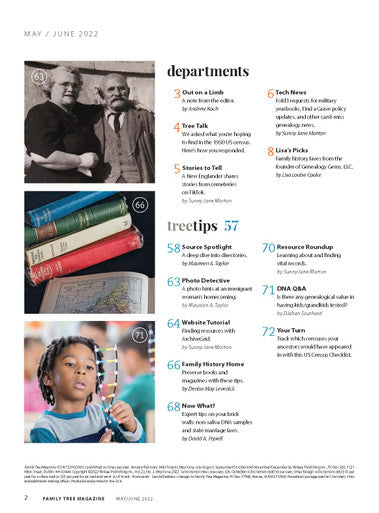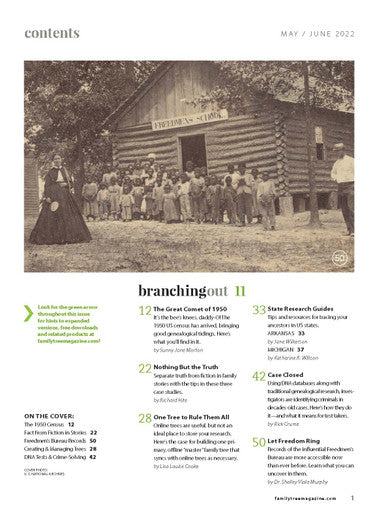1
/
of
7
Family Tree Magazine Store
Family Tree Magazine May/June 2022 Digital Edition
Family Tree Magazine May/June 2022 Digital Edition
Regular price
$8.99 USD
Regular price
Sale price
$8.99 USD
Unit price
/
per
Shipping calculated at checkout.
Couldn't load pickup availability
What's Inside!
Highlights from this issue include:- A complete 1950 US census guide, including lists of questions asked and a worksheet for recording entries
- An inside look at how DNA test results are being used to solve crimes
- Expert advice on where to store your family tree information: software or online trees?
- Information on Freedmen's Bureau records, a can't-miss collection for Southern research
- A FREE Land Records Cheat Sheet
Contents
The Great Comet of 1950By Sunny Jane MortonIt’s the bee’s knees, daddy-O! The 1950 US census has arrived, bringing good genealogical tidings. Here’s what you’ll find in it.Nothing But the TruthBy Richard HiteSeparate truth from fiction in family stories with the tips in these three case studies.One Tree to Rule Them AllBy Lisa Louise CookeOnline trees are useful, but not an ideal place to store your research. Here’s the case for building one primary, offline “master” family tree that syncs with online trees as necessary. Case ClosedBy Rick CrumeUsing DNA databases along with traditional genealogical research, investigators are identifying criminals in decades-old cases. Here’s how they do it—and what it means for test takers.Let Freedom RingBy Dr. Shelley Viola MurphyRecords of the influential Freedmen’s Bureau are more accessible now than ever before. Learn what you can uncover in them. Plus!
- Research Guides: Arkansas and Michigan
- Stories to Tell
- Tech News
- Lisa's Picks
- Source Spotlight: Directories
- Website Tutorial: Finding Resources with ArchiveGrid
- Resource Roundup: Vital Records Resources
- Photo Detective
- Family History Home: Saving Books and Magazines
- Now What
- DNA Q&A: Testing Children
- Your Turn: US Census Checklist
Share

